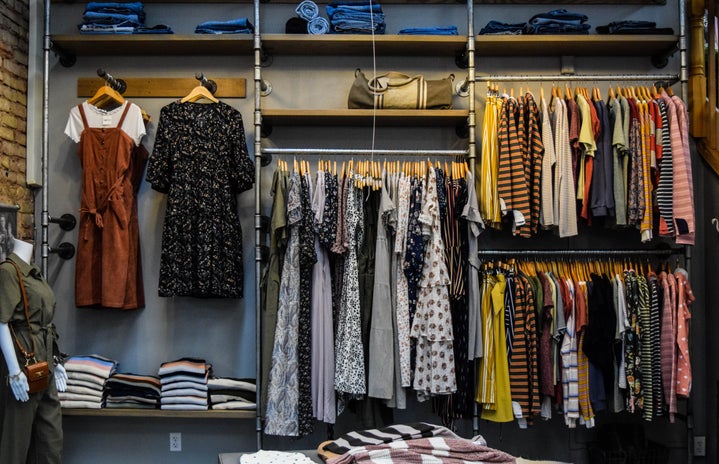This generation has been given more labels than we can subscribe to. Collectively, we are the Green Generation, Generation Me, GenX 2.0, the Indebted Generation. But what about the Socially-Aware Generation? The Responsible Generation? The Entrepreneurial Generation?
In recent years, a new kind of business has been in vogue. Companies that exist not only for profit, but for the express benefit of the world, have been on the rise. Names like Warby Parker, United By Blue, and Chipotle have become recognizable for their enticing products and commitment to the global community. Their constituents are mainly young, forward-thinking people who have recently gained buying power – namely, all of us. We hold true the idea that we are first citizens of the world, and that we have a responsibility to ensure our fellow citizens are treated fairly, have safe places to live and work, and have access to clean water and other modern necessities.
We call this practicing “social responsibility,” and there is a new name to add to the genre.
Meet Sebastien Yuste and HopeFit Apparel. Yuste launched his athletic outfitter earlier this year with a mission to contribute to education in West Africa as well as to empower others. Fresh out of high school this past June, Yuste is full of insights and goals for his fledgling business. He also happens to be an old friend of mine. This past week, I was given the privilege to ask him a few questions about how HopeFit Apparel came to be, and what its future might hold.
Her Campus: What was the process for creating HopeFit? Who did you look to for help?
Sebastian Yuste: The process was, and still is, a lot of trial and error. First, I had to decide what kind of products I wanted to sell. Next, as clothing is a very competitive market, I had to find an angle in order to distinguish the product. Before I took any steps into manufacturing, I knew that I would need to speak with professionals. I was fortunate enough to meet with a couple big names in the clothing industry. They told me what they thought would work and what would not.
Once I was happy with the first product – a simple t-shirt – I had to find a screen printer who was willing to produce on a relatively small scale. I found a local printer who was willing to work with me and from there produced my first batch of shirts. After a few weeks of tweaking and touch ups, I launched the website and HopeFit Apparel was live.
My high school math teacher, Kwesi Koomson, was one of my main inspirations in creating HopeFit. Kwesi founded a school in Ghana called Heritage Academy, where underprivileged children are able to receive a wholesome education. He challenged me in and outside the classroom. We would sit down together once a week to think of possibilities for HopeFit.
HC: What were your biggest driving forces and deterrents?
SY: I started HopeFit because I wanted to lead a business that would not only make money, but also empower others. The idea that by purchasing an article of clothing, someone could make a financial contribution to another’s education got me very excited about launching this business model.
HC: How did you settle on Heritage Academy? What does the school mean to you?
SY: I wanted Heritage Academy to be the initial benefactor of HopeFit because Kwesi was and is a huge inspiration to me. Kwesi was my soccer coach, advisor, and teacher in high school. I was amazed by the opportunities Kwesi was providing at his school and wanted to make a small contribution to his creation, and to him.
HC: What results of your work do you hope to see? What are you seeing in the present?
SY: I hope that HopeFit will serve as a role model for socially responsible business and become a competitive performance wear brand. We have sent four kids to school so far and have some exciting things in store for the next few months.
HC: Where do you see your business in the next few years? How do you plan on expanding?
SY: There is a great quote from Michael Dell: “If you’re the smartest person in the room, you’re in the wrong room.” With this phrase in mind I will continue seeking the advice of not just experts in the field, but people who will challenge me. If I want to successfully run a business at this age I need to constantly be asking questions. In the next few years I want to see HopeFit grow to a point where the business meets a balance point of sustainable profit while benefitting numerous social impact projects.
HC: What were your goals when you started? How did those change throughout the process? How much did you change?
SY: At the beginning of HopeFit I wanted to start a unique, multi-purpose clothing line – one that can generate revenue and give buyers confidence, but also support social impact projects. HopeFit has helped me see failure as a learning experience, not a loss. I’ve had products, ideas, and deadlines that have all been shot down, which has given me the motivation to get back up and generate something better.
A special thank you to Sebastian Yuste for granting an interview; we wish him the best of luck in his endeavors with HopeFit Apparel!
If you’d like to purchase from HopeFit, all products are available at www.hopefitapparel.com.
Follow HopeFit on Instagram: https://instagram.com/hopefit_apparel/
Photos courtesy of Sebastian Yuste and HopeFit Apparel.



